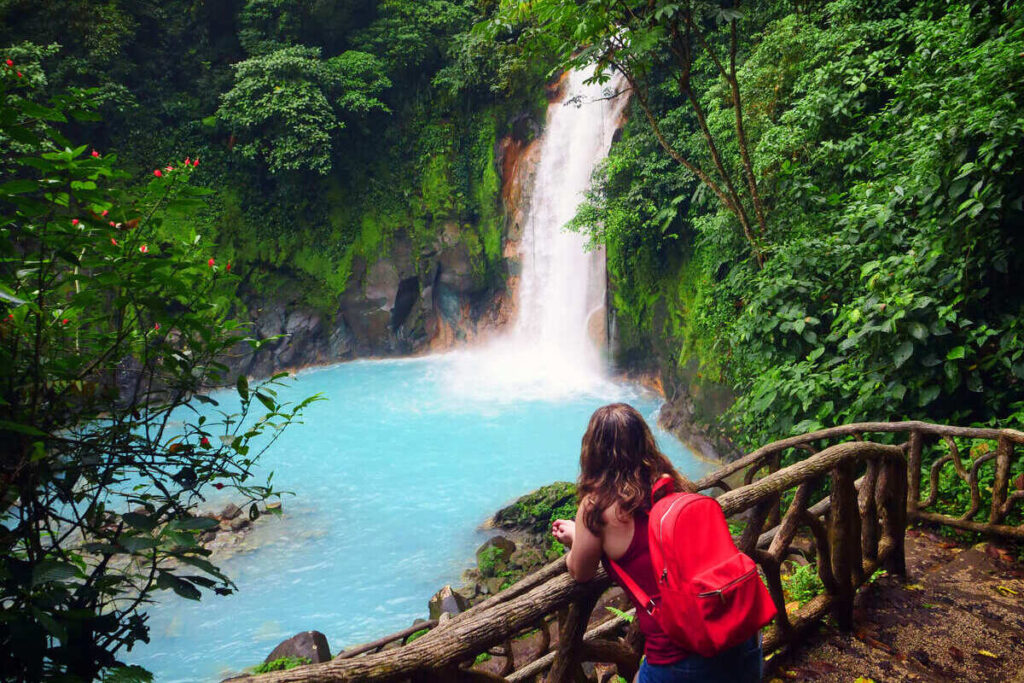Travel Guide
These Are The 3 Safest Destinations To Visit In Central America According To The U.S. State Department
Last Updated
Home to welcoming locals, a wealth of Hispanic cultures, and impressive natural sites – it concentrates between 5 to 12% of the world’s biodiversity – Central America is becoming an increasingly popular destination for Americans.


Gorgeous jungle preserves and semi-virgin beaches aside, the isthmus is not exactly the safest of destinations, with multiple countries being plagued by higher levels of violence, and more oftan than not, succumbing to political upheavals.
It’s no wonder a majority of Central American spots are considered dangerous to visit by the U.S. State Department, including Honduras, Nicaragua, and El Salvador, but there are always exceptions to the rule (in this case, three):
Belize, Costa Rica, Panama Are The Safest Central American Countries


According to Washington officials, there are only three Central American countries where U.S. citizens are not exposed to exceedingly high safety risks.
In other words, they are neither discouraged from visiting, nor are there specific travel warnings put in place.
If it’s Belize, Costa Rica, or Panama you’re headed, then you’re in luck: these are the safest travel destinations in Central America, as they are the only ones the U.S. State Department has added to their Level 2 Advisory, while all others fall under Level 3 or 4 categories.


In case you’re not familiar with the State Department’s safety risk assessment, the agency attributes different classification levels to individual countries or territories based on factors such as crime, political stability, and other geopolitical factors.
Level 1 is the safest, referring to countries Americans do not need to take extra precautions when visiting, such as Iceland or Japan.
Level 2 is moderately safe, but crime is more common, so following certain safety protocols is advised.


Moving down to 3, Americans should start reconsidering travel due to crime (Colombia is one notorious example). Finally, Level 4 is reserved for the black-listed ones, due to openly hostile attitudes towards Americans (Russia, North Korea), or as a result of diplomatic rifts between countries (Cuba).
Countries at Level 2 include popular European destinations like Spain, France, Turkiye, and Latin America, Mexico, and the Dominican Republic, all considered safe destinations for Americans.
As you can see, Belize, Costa Rica, and Panama are in very good company.


But why are they safer than other Central American states, or perhaps most importantly, is there any specific travel advice that applies here? Let’s start with Belize.
Travel Advice For Belize
Belize is the only English-speaking country in Central America, owing its existence to decades under British rule.
It’s best known for its crowd-free Caribbean beaches, giant marine sinkholes, and ancient Mayan cities with lost-to-time origins.
Located just south of Mexico’s Yucatan Peninsula, the safety guidelines that apply to Belize are not drastically different than those that must be followed in Cancun, Tulum, or other hugely popular Yucatanese resort towns.


To put it simply, don’t be an obvious gringo, flashing your expensive Rolex out in public, walking by yourself in poorly-lit areas at night, or verging off the tourist path in suburban zones where gangs operate, and chances are you’ll be fine.
In terms of specific travel advice, the U.S. State Department urges Americans to exercise caution when visiting the south side of Belize City, as it is where violent crime tends to take place, though there are no warnings in place for other parts of the country.


Onto Costa Rica.
Travel Advice For Costa Rica
Costa Rica is the backpacking capital of Central America, wooing nature enthusiasts with its impressive forest coverage—currently at 51%—gorgeous waterfalls, volcanic hinterland, and unspoiled coastlines—plural, as it offers access to the Caribbean and the Pacific.
In a region often destabilized by political turmoil, Costa Rica is somewhat of a beacon of light.
It ranks high on Human Development indexes, has a highly educated population, and has a reputation for being an enduring democratic state.


As it is better off economically and socially than other disadvantaged countries in the vicinity, Costa Rica does not share its close partners’ staggeringly high levels of urban violence, and crime is generally low by Central American standards.
Once again, that’s not to say crime is low, as armed robbery and petty crime are a predominant threat for tourists, as stated by the State Department itself, but it occurs at a lower incidence compared to Honduras, Guatemala, or Nicaragua.


Finally, it’s time we had a look at Panama.
Travel Advice For Panama
Panama is the only transcontinental country in the Americas, spanning the divide between North and South. Despite its relatively small size, Panama has no shortage of natural and manmade wonders.
With vast jungles populated by exotic species and vibrant city breaks, it is perfect for every type of traveler.
Similar to Costa Rica, it is a much more developed country than most of its peers, being officially regarded as high-income, a status it shares with the United States and Canada.


It also ranks as one of the most competitive economies in the Americas, and needless to say, security is a lot tighter as a result of the noteworthy social progress.
It may be no Switzerland, if you know what we mean, but it sure isn’t crime-ridden, neighboring Colombia.
The U.S. State Department places Panama at Level 2 due to crime, similar to Belize, Costa Rica, and the majority of the world’s 195 countries that find themselves in this category. Still, the only areas where there is a significantly high safety risk are parts of the Mosquito Gulf and the Darién Region.


Authorities did not go into detail about which parts.
Now you know why these Central American countries in particular are safer, and what are some of the precautions you must observe while visiting.
Read more about the topic and start preparing for your next getaway here.
↓ Join Our Community ↓
The Travel Off Path Community FB group has all the latest travel news, conversations, and Q&A’s happening daily!


SUBSCRIBE TO OUR LATEST POSTS
Enter your email address to subscribe to Travel Off Path’s latest breaking travel news, straight to your inbox.
This article originally appeared on TravelOffPath.com
Opinions expressed here are the author’s alone, not those of any bank, credit card issuer, hotel, airline, or other entity. This content has not been reviewed, approved or otherwise endorsed by any of the entities included within the post.
Source link

